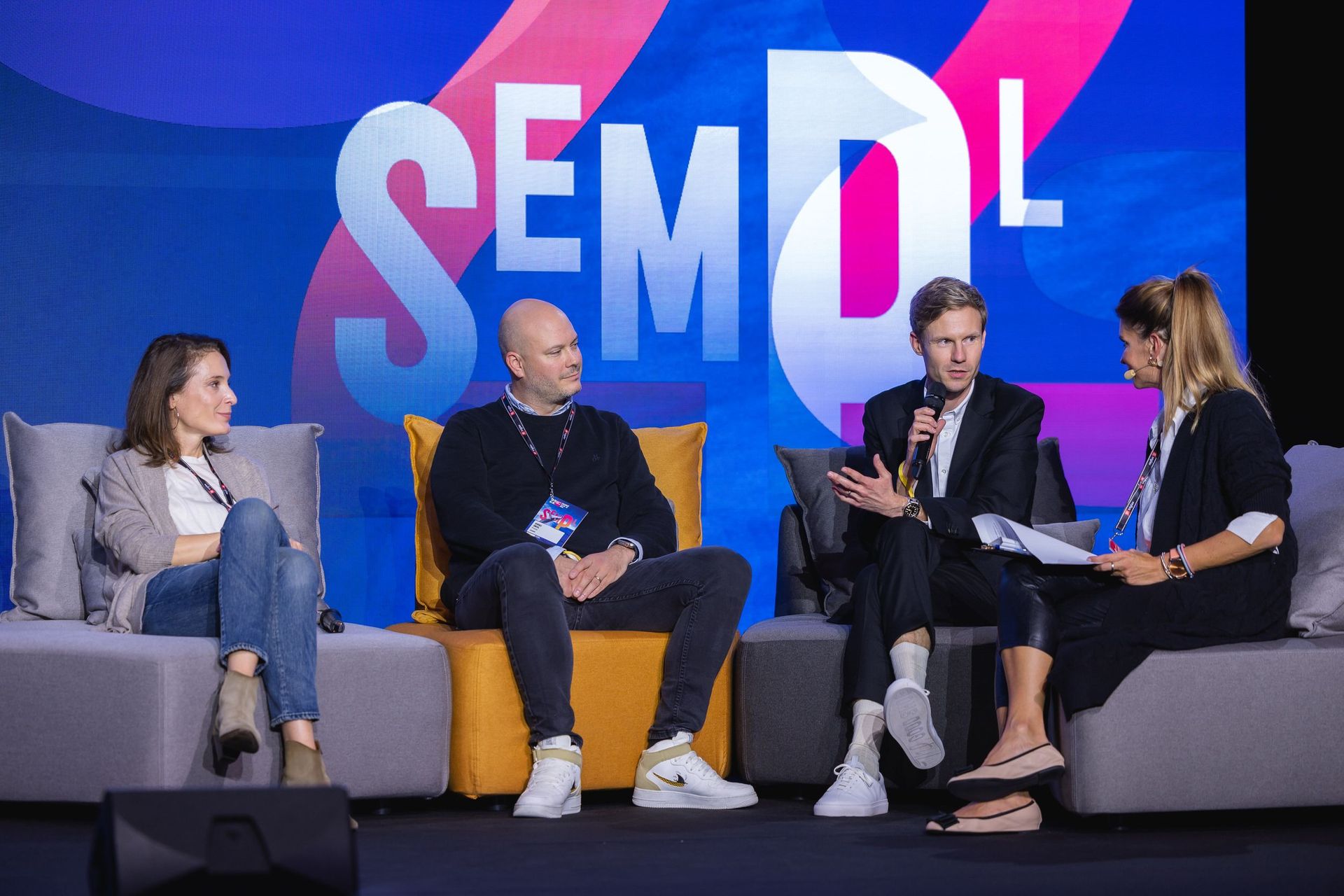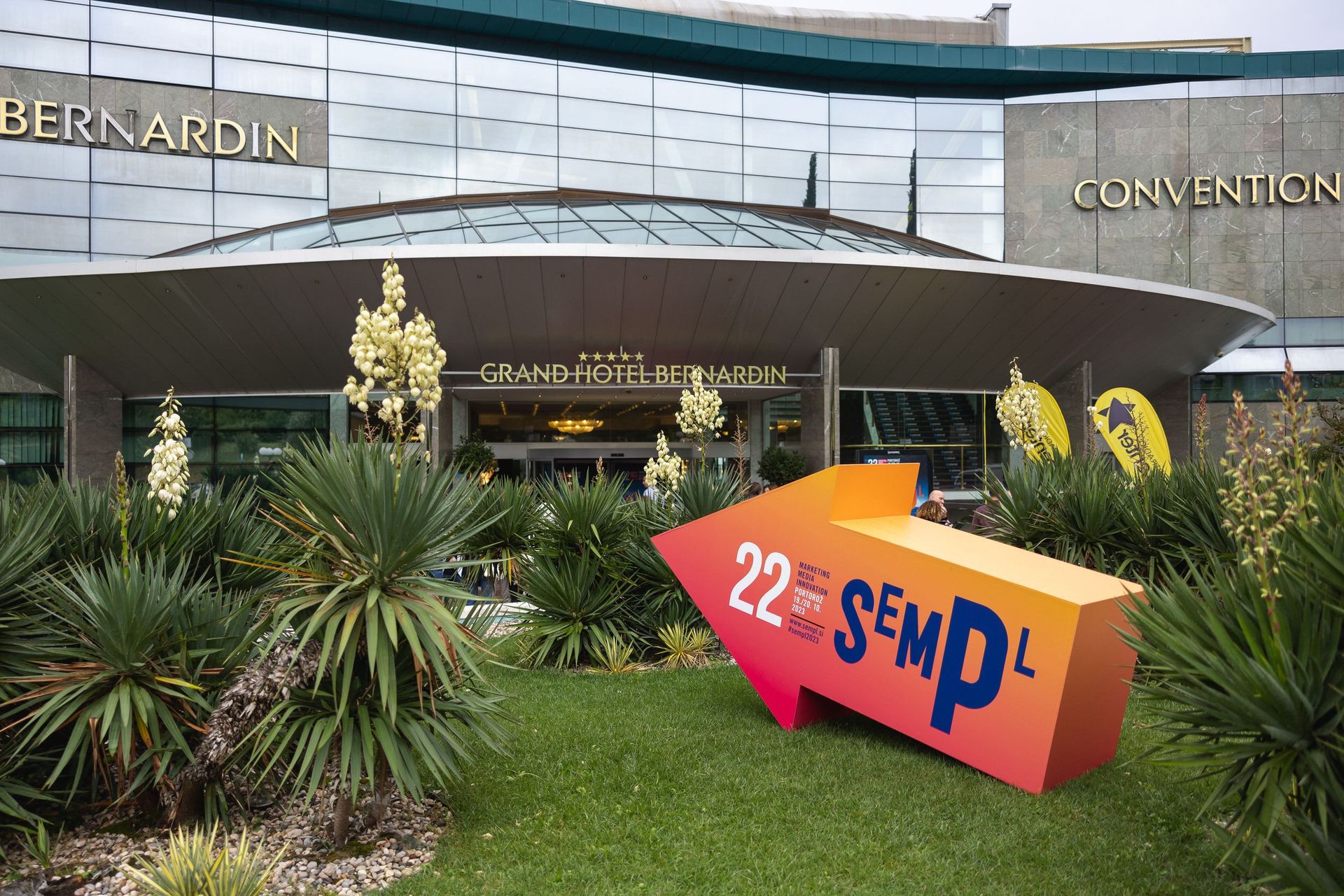
SEMPL: Media trends to have in mind for 2024
SEMPL, the two-day regional conference on media trends, ended this afternoon at the Grand Hotel Bernardin, Portorose, Slovenia. Around 700 attendees from the Adriatic region listened to more than thirty international speakers in the fields of marketing, media, communication, and leadership, who shared their experiences and predictions about the future trends.
Portorose, October 20, 2023 – SEMPL, which returned to Portorose, Slovenia, after four years, was visited by a crowd of knowledge-seeking visitors who got acquainted with current trends and predictions of what the future holds for companies, so that they can focus on a path that leads to progress and success.
The media and communication industry is among those, which are experiencing the fastest changes. These are largely dictated by the rapid development of technology and, as a result, changed consumer habits. Consumers are no longer loyal to brands, their level of attention to advertising messages is decreasing, and the communication channels through which advertisers access them are increasingly fragmented.

Sempl 2023
Advertising investments are still increasing
Mitja Tuškej, Strategist and Partner in Formitas Group, and Zoran Savin, Director of IAB Slovenia and Consultant at Digitall.si, gave their views on the past five years in media and advertising. The number of advertisers and the number of advertised family brands has increased over the past five years, especially during the post-corona period, by 5%, which leads to an information overload that consumers face daily. Despite this, the ads are still being noticed, especially online, outdoor media and radio, while on television and in print media the viewability is slightly declining. Digital media, television and radio had the greatest growth in advertising investments; outdoor media received approximately the same amount, while advertising in print media was decreasing; the growth of advertising investments in all media is thus 16%. “It’s your content that will win, by weaving it across all channels and media. Focus on the channels that will direct your content to your target group. Embrace digitization and expand your horizons!” the speakers advised the audience.
Use AI, but control it
Alastair Banks, UK digital expert who co-founded his first digital agency, Optix Solution, at the age of 19, and which has grown into one of the leading agencies in the UK, highlighted the digital trends that will, in his opinion, have the most impact on marketing and advertising in 2024. He advised:
- Integrate ChatGPT Plus into your everyday tasks and routines.
- People buy people – invest in your key thought leaders and younger teams to give you the edge over competitors.
- Is your content helpful? Remove poor quality content and focus on creating content for the user. AI is ok but needs checking by experts.
- Work on your first-party data strategy – what does your marketing look like in a cookie-less world?
- Power up your advertising with machine learning like Google’s Performance Max.
How to design your own future
After an enthusiastic reception on the SEMPL stage eight years ago, Dr Max Mckeown, a UK strategic psychologist and consultant who helps companies establish long-term strategies to survive and thrive in a changing market, presented his world view again. “Companies often pay too little attention to what could kill them, that is, what prevents them from being successful. Because they are too focused on details, they don’t have the whole picture in front of them; they see the trees, but not the forest. But in the end, it’s not the trees or the forest that matters, it’s the path you take; the mission that you are fulfilling,” he said while sketching his ideas on a blank canvas. But what strategy actually is, is often misunderstood in companies, so Mckeown explains: “Strategy is not a vision of the distant future. It’s about what you do today that will help you be better off tomorrow. Each of the thousands of steps on the way to the set goal is important, but of course not all of them are of strategic importance, so you need to set priorities. A strategy is not a document, spreadsheet, or plan. It’s about creating a pattern of behaviour that will help you succeed.”
Creativity is a human superpower
It was also interesting to listen to Dalibor Šumiga, a Croatian expert in behavioural marketing, who said that only 4% of consumers perceive ads as positive, 7% have a negative opinion of them, and 89% do not notice or remember them at all. This makes it even more important for advertisers to deliver truly creative ads. “Creativity is our superpower, but unfortunately, our creative abilities decline over the years,” he says. In any case, it is recommended to develop our creative thinking, as research shows that creativity contributes as much as 47% to the sales outcomes, 22% comes from reach, 15% from the brand, 9% accounts for targeting, 5% from recency, and only 2% from context. In doing so, he swept away the myth that the brand love exists. “No, there is no such love, it’s just a brand that is familiar to the consumer.” However, the brand power is real and is also a strong purchasing factor, which he illustrated with the logos of well-known companies that are known to practically all people.
In the end, he cited George Bernard Shaw – and these thoughts can also be applied to marketers:” “A reasonable man adapts himself to the world. An unreasonable man tries to adapt the world to himself. All the progress depends on the unreasonable man. And you, marketers, are these unreasonable people.”
Stories sell, not ads
At the panel on how to communicate in 2024, Iva Đurković, CEO of Luna TBWA and OMD Serbia, Gregor Firbas, CEO of Futura DDB, and Jernej Smisl, Director of Corporate Consulting at Pristop, stressed that the stories are what sells, not ads. Brands are increasingly venturing into topics such as sustainability and well-being, using storytelling to capture people’s attention. “Authenticity is now the rule of the game, so it’s no wonder how successful TikTok influencers are,” says Đurković. The importance of influencers is still high, as well as celebrities in ads that give brands their mark. “We want to identify with the actors in the movies and series, and we feel that we are closer to them if we use the same products as they do,” says Firbas. As they agreed, marketing agencies are constantly in a transformation phase, as they have to adapt to the market all the time. “The role of us, the agencies, is to simplify things for consumers in this complex world. We see ourselves as navigators in this fragmented world where the consumer is spoiled for choice. The role of the agency is to guide the consumer to the brand during the entire consumer journey,” said Đurković. The panellists also highlighted the power of television, which in their view is still the most effective advertising channel.
Here comes a new metric: attention
The level of people’s attention is decreasing, so it is necessary to develop new metrics in (digital) marketing. One of them is attention rate, a metric developed by Teads, which was discussed at SEMPL by Katarzyna Kabiesz, Head of Insights CEE at Teads. “If we can get attention, that’s the entry point to people’s hearts and minds,” she says, adding that when measuring attention, they connected media metrics to purchase intent. “Advertisers using this metric will increase their effectiveness and create a competitive advantage,” says Kabiesz, who adds that the attention metric predicts sales and business results better than click-through rates, viewability, and other online metrics.
Four principles of behavioural science
Richard Shotton, a UK expert in behavioural science, is also the author of The Choice Factory and The Illusion of Choice. As he said at SEMPL, people make a lot of various decisions every day, so taking shortcuts and relying on snap judgments is crucial. “Marketing is in the business of changing behaviour, and four simple ways to use behavioural insights can be applied to marketing,” says Shotton, stating, “Every marketing activity should be easy, attractive, timely, and social. All people are influenced by others do, and advertisers can use this for effective marketing.” He also mentioned another interesting fact, namely that people are much more susceptible to ads when they are in a good mood, so advertisers should “catch” them while they are having fun, or make fun activities for them.
These are some of the highlights from the speakers on the SEMPL ‘future stage’, while the attendees at the ‘deep dive’ stage could hear about good marketing practice examples, and participate in workshops on various topics, from marketing effectiveness on TikTok to shaping the customer experience with the help of artificial intelligence.
Grand Sempler goes to Bosnia and Herzegovina; Life Achievement Award for Ana Predovič
As part of SEMPL, the Sempler Awards were once again awarded to the best media strategies in the Adriatic region. The jury evaluated 102 submitted entries and chose 52 finalists, from which they selected the winners of eleven golden awards and the highest award, the Grand Sempler. This one went to Bosnia and Herzegovina, for the “Living in Bingo” project, which was created by Via Media for the Bingo retail chain. In addition, this project won three more Golden Semplers, and one more golden award went to Bosnia and Herzegovina. One Golden Sempler went to Croatia, and six were awarded to Slovenian projects. You can see all the winners of the Sempler Awards Competition here.